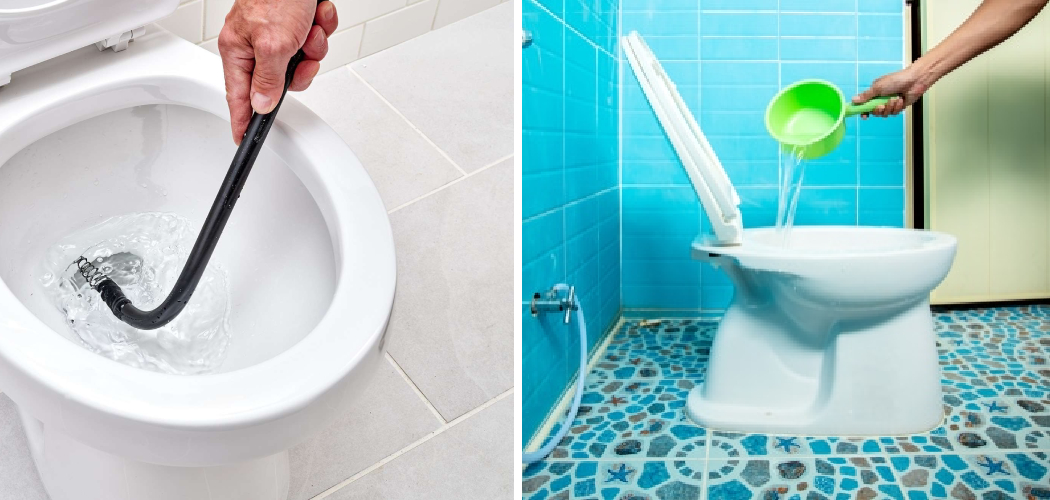When you flush the toilet and the water doesn’t go down, it can be a frustrating experience. Clogged toilet pipes are a common plumbing issue that can be caused by various reasons, such as too much toilet paper, non-flushable items being flushed, or even root intrusion in older homes.
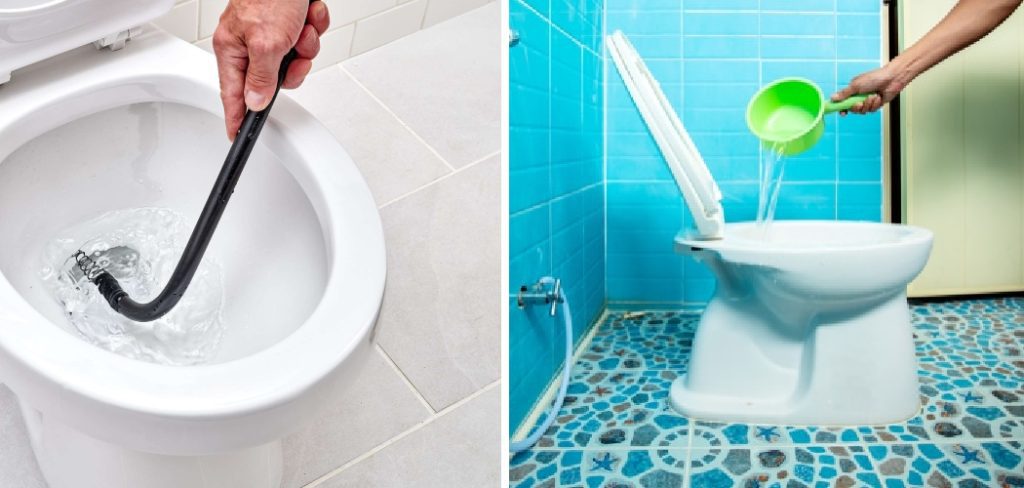
Clearing out your toilet pipes is an important task to ensure the proper functioning of your toilet and prevent any potential damage to your plumbing system. Here are some steps you can take on how to clear toilet pipes to clear out clogged toilet pipes.
Necessary Items
To clear out your toilet pipes, you will need:
- Plunger
- Toilet auger/snake
- Rubber gloves
- Bucket
5 Things to Know Before You Start
1) Turn off the Water Supply
Before you start working on your clogged toilet pipes, make sure to turn off the water supply. This will prevent any overflowing or splashing of contaminated water. It’s always a good idea to place towels or old rags around the base of the toilet to catch any spills.
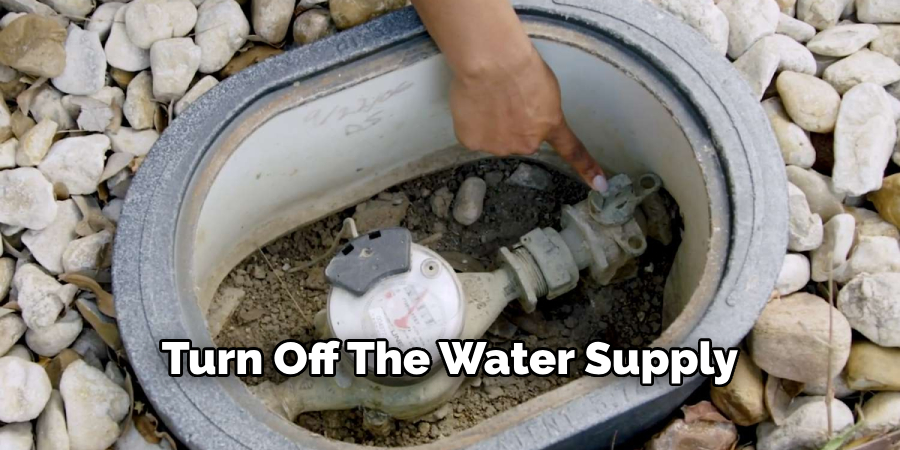
2) Identify the Source
It’s important to identify the source of the clog before attempting to clear it. If you suspect an object has been flushed, try using a plunger first. If that doesn’t work, then use a toilet auger to dislodge the object.
3) Use a Plunger
A plunger is the first tool you should use when attempting to clear clogged toilet pipes. With proper technique, a plunger can create suction and push air through the pipes to dislodge any blockages. Make sure to use a plunger specifically designed for toilets, as they have a flange that creates a better seal.
4) Try a Toilet Auger/Snake
If the plunger doesn’t work, the next step is to use a toilet auger or snake. This tool has a long, flexible cable with a hooked end that can be inserted into the pipes and rotated to break up any blockages.
5) Be Gentle with Older Toilets
If you have an older toilet, be gentle when using a toilet auger or snake. Older toilets may have more fragile pipes that can easily get damaged if too much force is applied. Even with newer toilets, it’s important to be cautious and not use excessive force.
12 Steps on How to Clear Toilet Pipes
Step 1: Identify the Problem
The first step in clearing out your toilet pipes is to identify the problem. Is the water not going down at all, or is it draining slowly? This will help you determine the severity of the clog and what measures need to be taken.
Step 2: Put on Rubber Gloves
Before attempting to clear out the clog, put on a pair of rubber gloves to protect your hands from any bacteria or debris in the toilet, as unpleasant as it may seem, this is an important step for hygiene purposes.
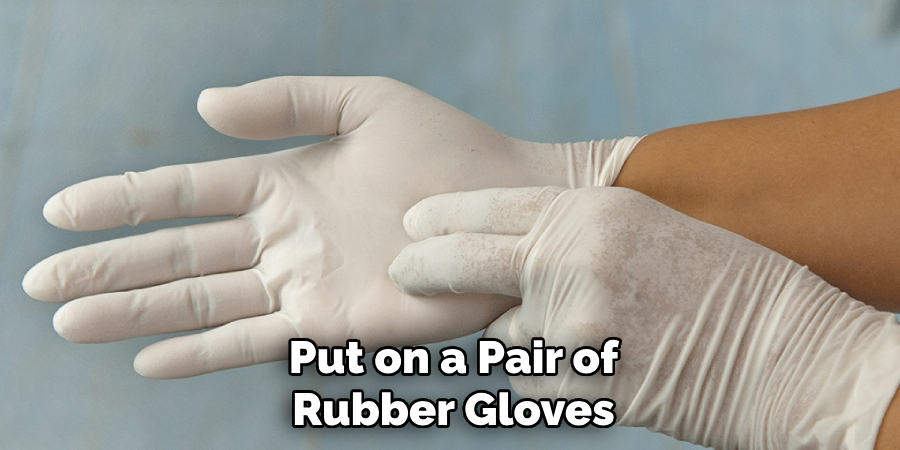
Step 3: Use a Plunger
If the clog is minor and water is still draining slowly, you can try using a plunger. Place the plunger over the drain hole in your toilet and push down gently but firmly. This will create suction that can help dislodge the clog.
Step 4: Try a Toilet Auger/Snake
If the plunger doesn’t work, you can try using a toilet auger or snake. Insert the end of the tool into the drain hole and turn it clockwise to dislodge any obstructions in the pipes. And be sure to wear gloves for this step as well.
Step 5: Check the Water Level
If a blockage in your pipes does not cause the clog, it may be due to low water level. Check your toilet tank’s water level and ensure it is at the recommended mark. If not, adjust the float valve to increase the water level.
Step 6: Use a Chemical Cleaner
If the clog is still persistent, you can try using a chemical cleaner specifically designed for clearing out toilet pipes. Be sure to follow the instructions carefully and wear gloves and protective eyewear when handling these chemicals.
Step 7: DIY Drain Cleaner
If you prefer a more natural approach, you can create your own drain cleaner using ingredients like baking soda, vinegar, and hot water. Pour half a cup of baking soda into the toilet bowl, followed by half a cup of vinegar. Let it sit for a few minutes before pouring hot water down the drain.
Step 8: Avoid Using Chemical Drain Cleaners Regularly
While chemical cleaners may be effective in clearing out clogs, they can also damage your pipes with frequent use. It’s best to save them as a last resort and opt for more natural methods whenever possible.
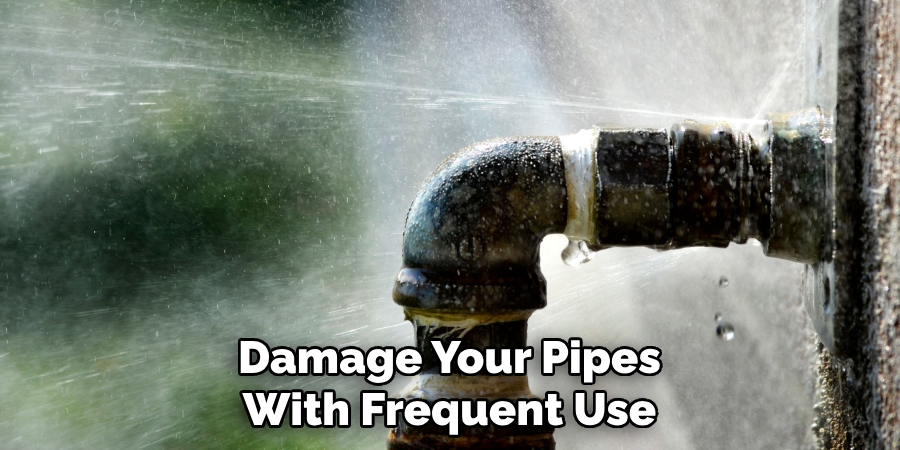
Step 9: Check the Vent
If none of the above methods work, it may be due to a blocked vent in your plumbing system. In this case, you may need to call a professional plumber to clear out the blockage.
Step 10: Prevention is Key
To avoid frequent clogs in your toilet pipes, it’s important to be mindful of what you flush down the toilet. Avoid flushing items like paper towels, wipes, and feminine hygiene products, as they can easily cause blockages.
Step 11: Regular Maintenance
Performing regular maintenance on your plumbing system can also help prevent clogs in your toilet pipes. This can include using enzymatic cleaners to break down any buildup in the pipes or having a professional plumber perform routine inspections.
Step 12: Call a Professional
If none of the above steps work, it’s best to call a professional plumber for assistance. They have the expertise and tools to effectively clear out any stubborn clogs in your toilet pipes.
Dealing with a clogged toilet is never a pleasant experience, but by following these steps on how to clear toilet pipes and taking preventative measures, you can clear out your toilet pipes and prevent future clogs. Remember to wear protective gear, avoid using chemical drain cleaners regularly, and seek professional help if needed.
Maintaining healthy plumbing habits can save you from potential headaches in the future. So, be mindful and take care of your toilet pipes to ensure a smooth and functioning plumbing system.
9 Safety Measures to Keep in Mind
1) Wear Protective Gear
As mentioned earlier, it is important to wear rubber gloves when clearing out clogged toilet pipes. This will protect your hands from any bacteria or debris in the toilet. As an extra precaution, you can also wear protective eyewear to prevent any splashes or spills.
2) Avoid Mixing Chemicals
If you are using a chemical drain cleaner, be sure to avoid mixing it with other chemicals. This can cause dangerous reactions and should always be avoided. If you are unsure about which chemicals can be safely used together, it’s best to stick with natural methods.
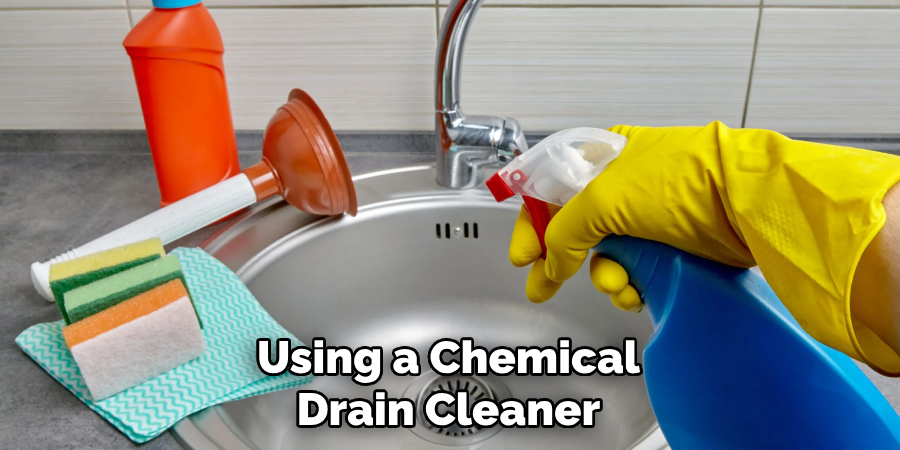
3) Properly Dispose of Chemical Cleaners
After using a chemical drain cleaner, make sure to dispose of the remaining solution properly. Do not pour it down any drains or toilets, as this can cause harm to your plumbing and the environment. Instead, follow the instructions on the product label for proper disposal.
4) Use Tools Properly
When using a plunger, toilet auger, or snake, make sure to follow the instructions carefully and use them properly. Improper usage can cause damage to your pipes and may not effectively clear out the clog.
5) Take Breaks
Clearing out clogged toilet pipes can be a physically demanding task. Remember to take breaks and pace yourself to avoid exhaustion or injury. While it’s important to get the job done, your safety should always come first.
6) Keep Children and Pets Away
It is best to keep children and pets away from the bathroom when dealing with clogged toilet pipes. The chemicals used or the tools being used can be harmful if ingested or touched by curious little hands or paws.
7) Ventilate the Area
If you are using chemical cleaners, make sure to ventilate the area by opening windows and doors or turning on a fan. This will help avoid inhaling any fumes and keep the air circulating. Even when using natural methods, it’s always a good idea to have proper ventilation in the bathroom.
8) Be Patient
Clearing out clogged toilet pipes can be a frustrating and time-consuming task. It’s important to be patient and not rush the process. Trying to force or speed up the process may cause further damage to your plumbing.
9) Seek Professional Help
If you are unsure or uncomfortable with clearing out a clog in your toilet pipes, it’s best to seek professional help.
Plumbers have the expertise and tools to effectively handle any plumbing issue and can save you from potential mishaps or accidents. It may cost more than a DIY approach, but your safety and peace of mind are priceless.
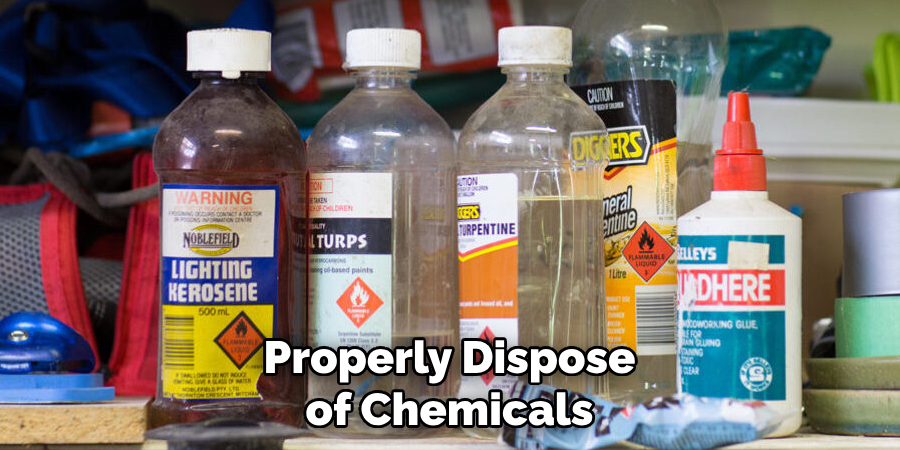
Keeping these safety measures in mind while dealing with clogged toilet pipes will ensure a smooth and safe process. Remember to always wear protective gear, properly dispose of chemicals, and take breaks when needed.
If you encounter any difficulties or are unsure about the situation, it’s always best to seek professional help. Keep your toilet pipes clear and your plumbing system healthy by following these tips and maintaining good plumbing habits.
8 Things to Avoid Flushing Down the Toilet
1) Paper Towels
While they may seem similar to toilet paper, paper towels are not designed to break down in water and can easily cause clogs in your toilet pipes. As their name suggests, they are made to absorb water and will not disintegrate like toilet paper.
2) Wipes
Even if the packaging says “flushable,” wipes should never be flushed down the toilet. They do not break down easily and can cause major blockages in your plumbing system. When in doubt, throw them in the trash instead.
3) Feminine Hygiene Products
Tampons and pads are not designed to be flushed down the toilet. They can expand and block your pipes, leading to costly repairs. Wrap them up and dispose of them properly in the trash. And if you are using a menstrual cup, be sure to empty it in the sink instead of flushing it down the toilet.
4) Dental Floss
Dental floss is not biodegradable and can easily get tangled with other items in your pipes, causing a clog. Always throw dental floss in the trash. So, be mindful and take care of your toilet pipes to ensure a smooth and functioning plumbing system.
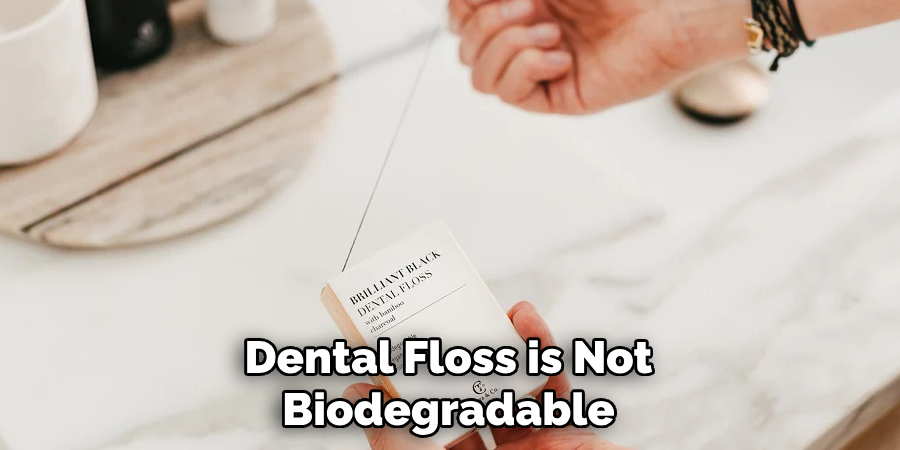
5) Hair
While it may seem harmless, hair can easily build up in your pipes and cause clogs. Make sure to clean out any hair from the drain after taking a shower or shaving instead of letting it go down the toilet.
6) Food
It may be tempting to flush food scraps down the toilet, but this can also lead to clogs. Even small bits of food can add up and cause issues in your plumbing system. Then, be sure to dispose of food waste properly in the kitchen.
7) Medication
Flushing medication down the toilet can have negative effects on the environment and contaminate water sources. Always follow proper disposal methods for expired or unused medications instead of flushing them.
8) Grease and Oil
Grease and oil may seem harmless when they are still in liquid form, but they can solidify and cause major clogs in your pipes. Avoid pouring them down the drain or toilet and dispose of them properly. A good rule of thumb is to let grease and oil cool and then scrape it into a container before throwing it away.
By avoiding these items from being flushed down the toilet, you can prevent unnecessary clogs and maintain a healthy plumbing system. Always remember to dispose of items properly and be mindful of what goes down your toilet. With these tips on how to clear toilet pipes, you can keep your toilet pipes clear and avoid potential plumbing disasters.
8 Additional Tips for Maintaining Healthy Toilet Pipes
1) Regularly Clean and Disinfect Your Toilet
A clean toilet not only looks and smells better, but it also helps maintain healthy pipes. Make sure to regularly clean and disinfect your toilet to prevent any buildup or bacteria growth that can lead to clogs.
2) Use a Plunger Regularly
Using a plunger once a week can help prevent any potential clogs from forming in your toilet pipes. Simply flush the toilet and use the plunger to create suction, which will help clear out any buildup or debris.
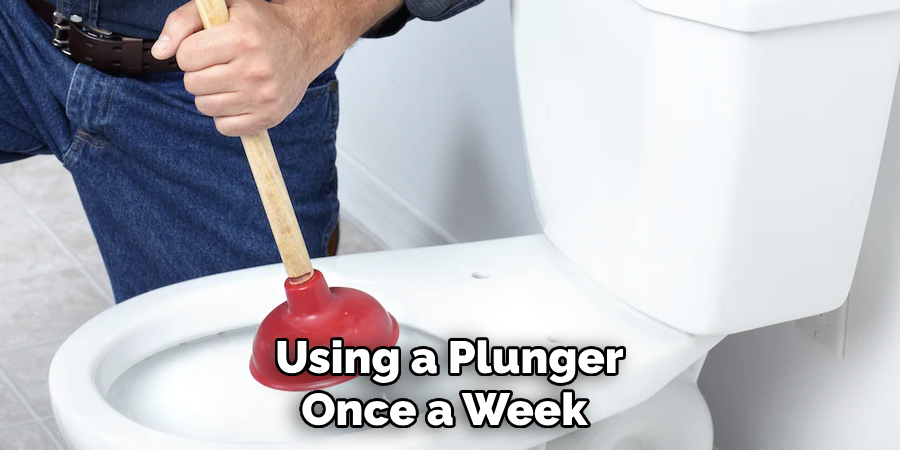
3) Use Natural Cleaning Methods
Instead of harsh chemical cleaners, opt for natural methods like baking soda and vinegar to clean your toilet. These ingredients are less harmful to your pipes and the environment.
4) Don’t Ignore Warning Signs
If you notice any unusual sounds, slow draining, or strange odors coming from your toilet, don’t ignore them. These could be signs of a potential clog or other plumbing issue that should be addressed before it becomes a major problem.
5) Watch What You Flush
Aside from items that should never be flushed down the toilet, also be mindful of the amount of toilet paper you are using. Flushing excessive amounts of toilet paper can still cause clogs in your pipes.
6) Regularly Check for Leaks
Inspecting your toilet and its components for any leaks can help prevent water damage and save you money on your water bill. If you notice any leaks, be sure to address them promptly. Also, check for any cracks or damage in the toilet bowl or tank that could potentially lead to leaks.
7) Avoid Using Chemical Drain Cleaners
While it may seem like an easy solution, harsh chemical drain cleaners can actually do more harm than good. They can corrode your pipes and cause long-term damage. Stick to natural methods or seek professional help if you have a stubborn clog.
8) Have Your Plumbing System Inspected Regularly
Just like with any other aspect of your home, regular maintenance is key to keeping your plumbing system healthy. Consider having a professional plumber inspect and maintain your pipes and toilet periodically to catch any potential issues before they become major problems.
Remember, prevention is always better than cure when it comes to maintaining healthy toilet pipes. By following these tips and being mindful of what goes down your toilet, you can save yourself from costly plumbing repairs and ensure a smoothly functioning toilet for years to come. So, keep these tips in mind and take care of your toilet pipes to maintain a healthy plumbing system in your home.
Frequently Asked Questions
Can I Flush Toilet Paper Down the Toilet?
Yes, regular toilet paper is designed to break down easily in water. However, be mindful of how much you are using and avoid flushing excessive amounts at once.
Can I Flush Wet Wipes if They Say “Flushable” on the Packaging?
No, even if the packaging claims they are flushable, wet wipes should never be flushed down the toilet. They do not break down easily and can cause major clogs in your plumbing system. Always throw them in the trash instead.
What Should I Do If My Toilet Is Clogged?
If your toilet is clogged, try using a plunger first to clear the blockage. If that doesn’t work, avoid using harsh chemical drain cleaners and instead seek professional help from a plumber. Avoid flushing any additional items down the toilet until the issue is resolved.
When Should I Have My Plumbing System Inspected?
It is recommended that your plumbing system be inspected at least once a year. If you notice any warning signs or issues with your toilet, it is best to have it inspected sooner rather than later. Regular maintenance can help prevent major problems and save you money in the long run.
Ultimately, the frequency of inspections may depend on your specific plumbing needs and usage. Consult a professional plumber for personalized recommendations. Remember to also regularly clean your toilet and take preventative measures to maintain a healthy plumbing system.
Conclusion
Toilets are an essential part of our daily lives, and it is important to keep them in good working condition. By being mindful of what goes down the toilet and following these tips on how to clear toilet pipes to maintain healthy toilet pipes, you can prevent clogs and other plumbing issues. Remember to regularly clean and disinfect your toilet, use natural cleaning methods, and seek professional help if needed. With proper care, your toilet pipes can remain clear and functional for years to come.

